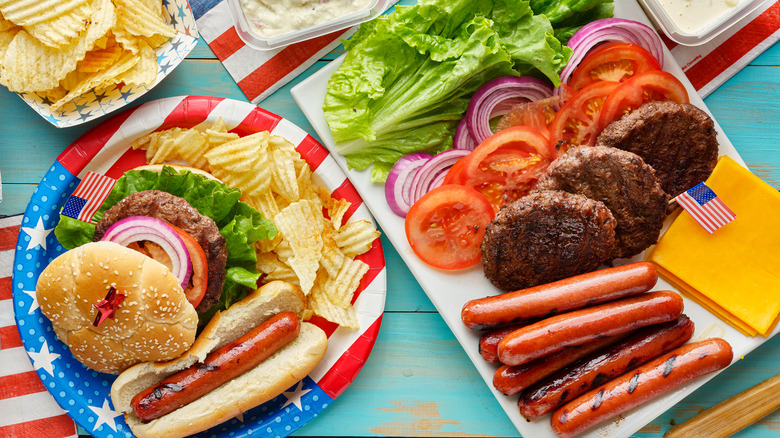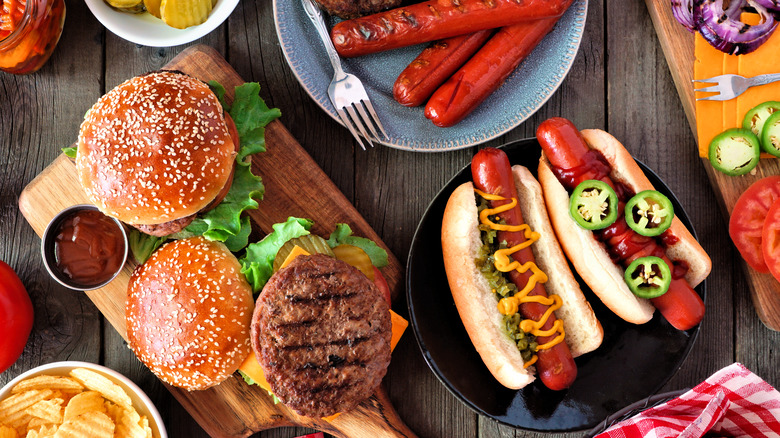How Long Can You Leave Grilled Hot Dogs Outside?
With warmer months approaching in many parts of the United States and beyond, it's time to start thinking about all the delicious hot-weather food we'll be cooking up this summer. The arrival of much-anticipated summer produce like tomatoes, corn, peaches, and cherries (via Food & Wine) has us dreaming about everything from sweet corn salad to juicy cobblers. But let's be real — the best part about summer cooking is, undoubtedly, firing up the grill.
Summertime, for us, means lighting up the propane or coals and enjoying an endless parade of grilled steaks, chicken, vegetables, and even fruits like watermelon. And of course, summer wouldn't be summer without grilling up a variety of burgers and dogs. When having a barbecue, many of us will hang outside for a few hours at a time, which means that the food we're pulling off the grill often remains on the table for a long time, too. We've all probably grabbed a hot dog from a platter that's been outside all afternoon, but are those dogs safe to eat, and, if not, what's the maximum amount of time they can remain outside in the summer heat?
During the hottest months, cooked hot dogs can only stay outside for an hour
If you love summertime grilling and frequently feature hot dogs at your barbecues, listen up. According to Clemson University, those hot dogs will have to be eaten within about an hour after they've been pulled off the grill. In ambient temperatures of 90 degrees Fahrenheit or higher, foodborne bacteria that might already be present in the hot dogs, such as Listeria monocytogenes, can multiply much more rapidly and make the wieners dangerous to eat (via USDA).
If summer temperatures are a bit cooler in your neck of the woods, grilled hot dogs have a bit more time to hang out on platters and paper plates, but no longer than two hours, according to Clemson University. After that, any leftover dogs should head straight to the fridge. When you're ready to eat those leftovers, you should fully reheat the hot dogs, making sure they're hot and steaming all the way through, which will reduce any risk of listeriosis (via USDA).

